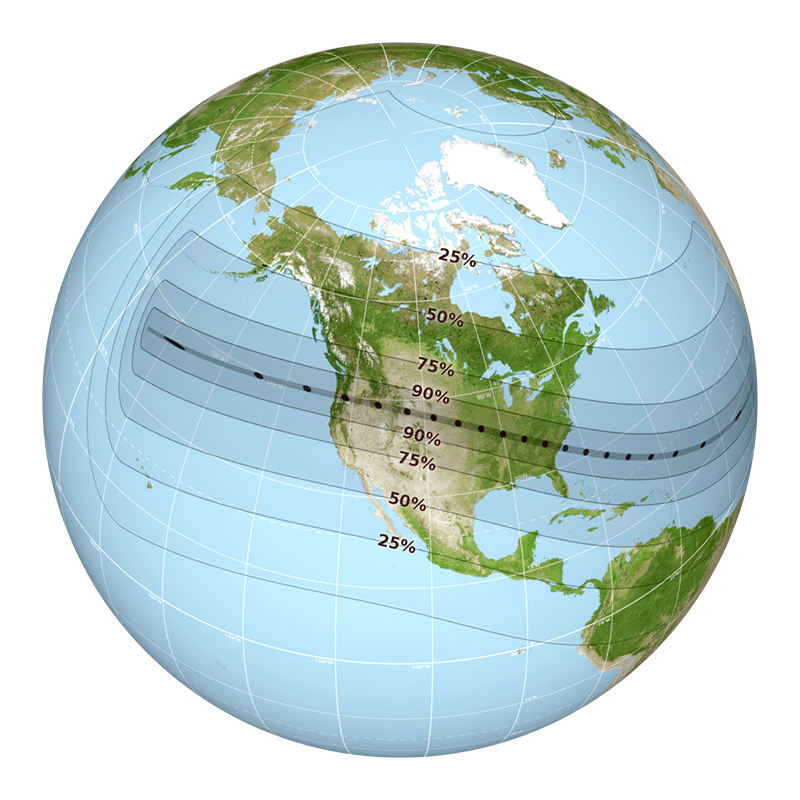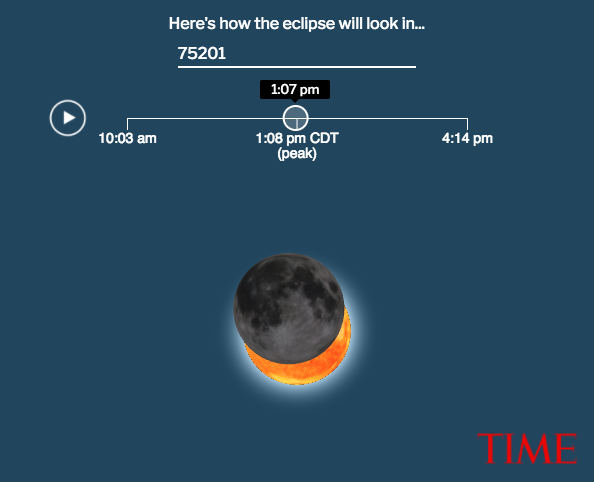Most of North America will experience a solar eclipse Monday, and while Dallas is out of the path of totality, wherein the sun is fully blacked out in ominous and inspiring fashion, we can still expect to see about 75 percent of the sun obscured by the moon that afternoon.
I know this because I have been intensely studying maps and graphs and guides compiled by the eggheads at NASA ahead of this cosmic event. I also Googled it. And because nothing does the trick like a well-developed web interactive, I consulted this visualization by the good people at Time, which gets right to the point:
Dallas will hit peak eclipse shortly after 1 p.m., although the moon will start passing by a little before noon and be on its way after about 2:30. The weather forecast for Monday is looking mostly sunny at this point.
Scientists advise that staring at the sun is a bad idea, even when the moon is running interference, but there are some ways to safely view the eclipse. You’ll need special viewing filters designed for occasions like this. Here is a list of NASA-approved manufacturers of special glasses and handheld viewers. If they’re sold out, and you’re more of a DIY type anyways, start reading up on pinhole projection.
You can also join watch parties at the Perot Museum, the Frontiers of Flight Museum, or the Fort Worth Museum of Science and History. Or watch a live stream of the eclipse, as viewed from locales across the country, on NASA TV. Or hunker down and work through the afternoon Monday, because your sense of childlike wonder at the mysteries of the solar system has been dulled by years of joyless labor and grinding existence.
Meanwhile, here are a few cool images and graphics from NASA, because space is great.










